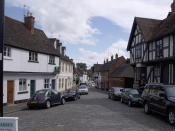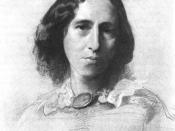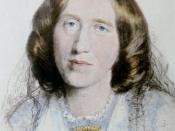The Victorian age was a time period in which the world of matter and objects outweighed the importance of the natural world; a time when materialism, economy, industry and scientific advancement took priority over all natural entities, and connected men with material objects more than with the innate world which they were first derived. Along with the severe connection to the unnatural and material world came the repression of natural human instincts, bending and molding people unnaturally to fit the skewed standards of a patriarchal society. The connection between "man and matter", and the loss of natural liberties in conjunction with man being an "extension of matter", became a prevalent topic among many Victorian writers. George Eliot, the author of "The Mill on the Floss", used imagery and objects to show the deranged view of the importance of materialism in her time period. The imagery in the novel shows evidence of how objects dictated society and affected the economy of the Victorian time period, showing that not only did materialism effect social classes and the every-day lifestyle, but also proved how repressed the Victorian society truly was.
The Mill on the Floss is a direct example of how materialism affected Victorian society, and how the connection between man and matter in Eliot's novel reveals the attempt of the Victorian's to control the world around them.
It is first important to observe that in "The Mill on the Floss" the natural aspects of the world surrounding the Tulliver's and St. Ogg's are always interrupted by a form of unnatural mater. Many of the natural images in the novel, from passages about the Red Deeps, to the initial description of the Floss in Book First and the river itself, prove that everything natural has been affected by man-made commercial objects. Nature...


